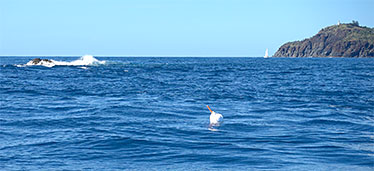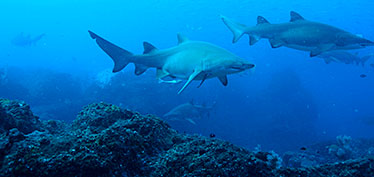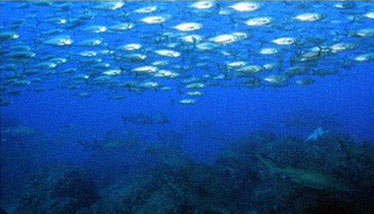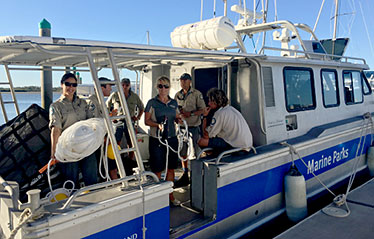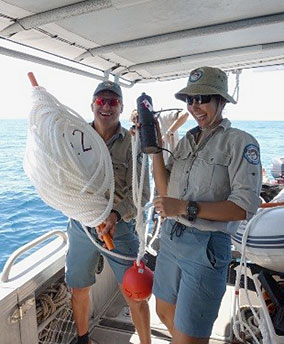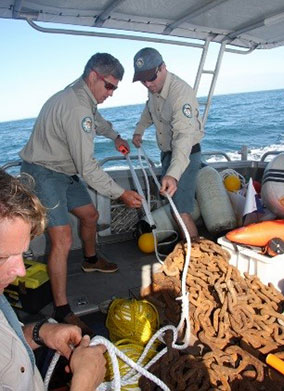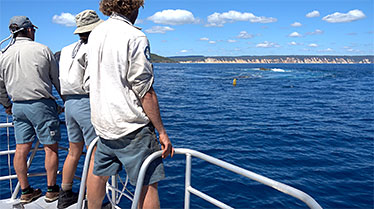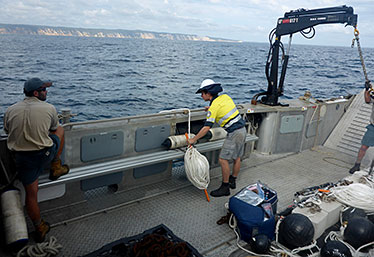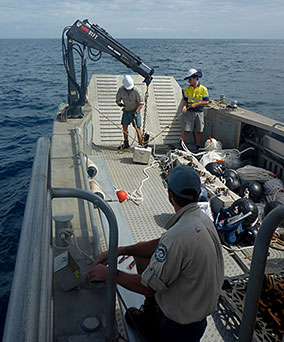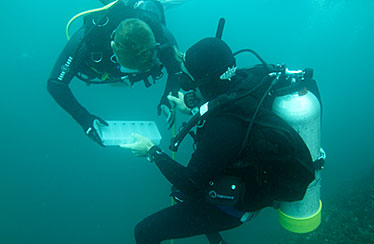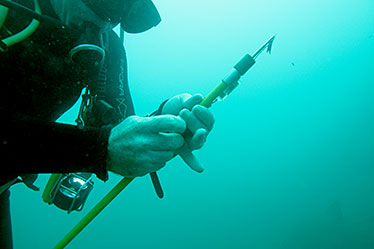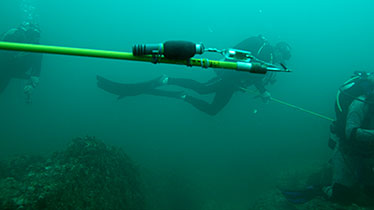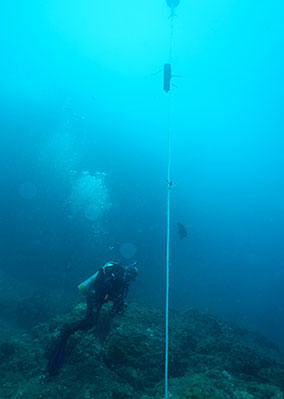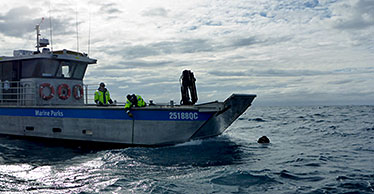Wolf Rock research project
Background
Wolf Rock, near Double Island Point, in Great Sandy Marine Park one of the most dived grey nurse shark aggregation sites in Queensland. Many people want a ‘diving-with-sharks’ experience.
Wolf Rock in detail
Wolf Rock, is currently the only known gestation site for the east coast population of grey nurse sharks. Mature females stay here for 9–12 months before heading south to central and southern New South Wales waters to pup and rest for 1 to 3 years.
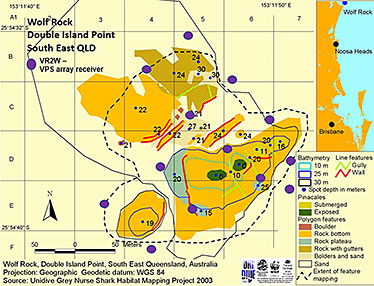

Wolf Rock currently has one permit holder (historical use) accessing this site on a commercial basis, which provides for 10 plus 2 divers with one vessel (as per legislation). Additional commercial marine park permits have been approved with specific conditions pending the outcomes of the research. The current use of Wolf Rock by these operators is expected to be very low, in terms of days per year. However, the scenario of large numbers of divers in the water for a large proportion of daylight hours during good weather, certainly has the potential to disturb, and possibly displace, these gestating sharks to locations where their key threatening process (fishing) is allowed.
Research methodology for Wolf Rock
- Record water (and dive) conditions.
- Analyse monthly commercial operator and club returns.
- Undertake diver and shark number counts.
- Undertake photo identification of grey nurse sharks.
- Carry out acoustic monitoring of grey nurse shark and diver movements.
Acoustic monitoring comprises of five distinct components done in these stages:
Stage 1: range testing of acoustic monitoring equipment
Stage 2: deployment of acoustic monitoring equipment
Stage 3 acoustic tagging of grey nurse sharks and dive leaders (on their buoyancy control device ) to simultaneously track diver and shark movements
Stage 4: equipment retrieval:
- outer boundary receiver array
- VPS receiver inner array around Wolf Rock
- Pinnacles and Round Rock receivers
Stage 5: Data analysis and reporting
- data analysis and reporting—final stage.
Grey nurse shark designated area Wolf Rock (Great Sandy Marine Park)




